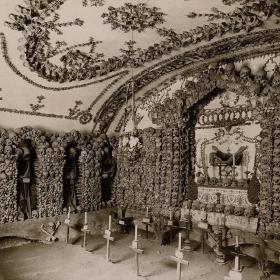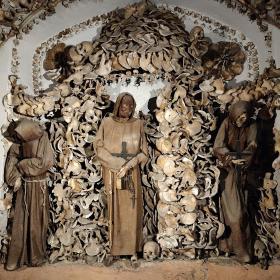The Crypt of the Capuchin Friars



L. P. Hartley’s novel The Go-Between famously starts “The past is a foreign country; they do things differently there.” Nothing demonstrates that quite so starkly as burial customs. Cultures have all sorts of hangups over how to deal with their deceased. It’s easy to assume people used to eat mostly the same as we do now, or got married or threw parties in basically the same ways as now. Less easy to imagine they dealt with their dead in the same way when you’re staring at hundreds of bodies stacked like cordwood.
So there’s a Capuchin crypt in Rome under the Santa Maria della Concezione dei Cappuccini church. The associated monastery moved there in the 1630s, and moved roughly 4,000 bodies with them. No one’s entirely sure who got the idea of using them as decorations, but by 1775 it had become something of a tourist attraction, as the Marquis de Sade mentions having visited in his writings.
What you get is a series of six dimly lit rooms, five of which are packed floor-to-ceiling with bones artfully arranged — finger bones as lamps, disembodied limbs forming a literal coat of arms, stacks of vertebrae and coccyxes snaking through columns of femurs. The final room features the skeleton of an child, holding scales and a scythe. It’s utterly amazing, although it tends tends to inspire me less to think about my inevitable death and more about the kind of batshit crazy things the living get up to.